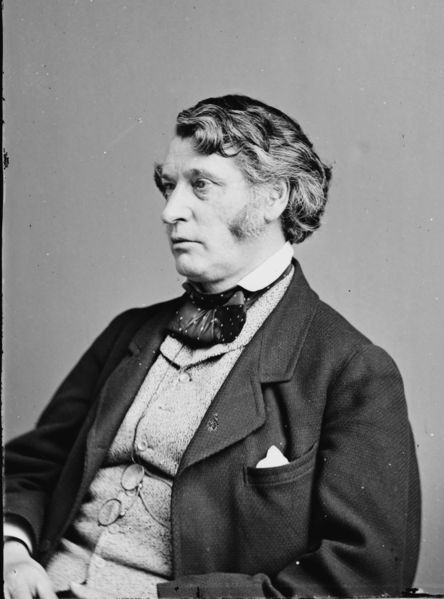Image:Charles Sumner - Brady-Handy.jpg
From Wikipedia, the free encyclopedia
- Image
- File history
- File links

Size of this preview: 444 × 599 pixel
Image in higher resolution (3072 × 4144 pixel, file size: 1.26 MB, MIME type: image/jpeg)
|
|
This is a file from the Wikimedia Commons. The description on its description page there is shown below. |
|
|
Summary
| Description |
Charles Sumner. Library of Congress description: "Charles Sumner" |
||||||||||||||||||
|---|---|---|---|---|---|---|---|---|---|---|---|---|---|---|---|---|---|---|---|
| Source | Library of Congress Prints and Photographs Division. Brady-Handy Photograph Collection. http://hdl.loc.gov/loc.pnp/cwpbh.02793. CALL NUMBER: LC-BH82- 5237 A [P&P] |
||||||||||||||||||
| Date |
between 1855 and 1865 |
||||||||||||||||||
| Author |
|
||||||||||||||||||
| Permission |
PD |
||||||||||||||||||
|
|
This image is available from the United States Library of Congress Prints and Pictures division under the digital ID cwpbh.02793 This tag does not indicate the copyright status of the attached work. A normal copyright tag is still required. See Commons:Licensing for more information. |
English: Charles Sumner ( January 6, 1811 – March 11, 1874) was an American politician and statesman from Massachusetts. An academic lawyer but a powerful orator, Sumner was the leader of the antislavery forces in Massachusetts and a leader of the Radical Republicans in the U.S. Senate during the American Civil War and Reconstruction along with Thaddeus Stevens. He jumped from party to party, gaining fame as a Republican. One of the most learned statesmen of the era, he specialized in foreign affairs, working closely with Abraham Lincoln. He devoted his enormous energies to the destruction of what he considered the Slave Power, that is the conspiracy of slave owners to seize control of the federal government and block the progress of liberty. His severe beating in 1856 by South Carolina Representative Preston Brooks on the floor of the United States Senate helped escalate the tensions that led to war. After years of therapy Sumner returned to the Senate to help lead the Civil War. Sumner, who specialized in foreign affairs, was a leading exponent of abolishing slavery to weaken the Confederacy. Although he kept on good terms with Abraham Lincoln, he was a leader of the hard-line Radical Republicans.
(This summary was created using Commons SumItUp)
Licensing
 |
This image (or other media file) is in the public domain because its copyright has expired. This applies to the United States, Canada, the European Union and those countries with a copyright term of life of the author plus 70 years. العربية ǀ Български ǀ Català ǀ Česky ǀ Dansk ǀ Deutsch ǀ English ǀ Ελληνικά ǀ Esperanto ǀ Español ǀ Euskara ǀ فارسی ǀ Français ǀ Galego ǀ עברית ǀ हिन्दी ǀ Bahasa Indonesia ǀ Italiano ǀ 日本語 ǀ 한국어 ǀ Kurdî / كوردي ǀ Nederlands ǀ Norsk (nynorsk) ǀ Bahasa Melayu ǀ Polski ǀ Português ǀ Русский ǀ Slovenščina ǀ Shqip ǀ Suomi ǀ Svenska ǀ Türkçe ǀ 简体中文 ǀ 正體中文 ǀ +/- |
File links
No pages on the English Wikipedia link to this file. (Pages on other projects are not counted.)
Retrieved from "http://en.wikipedia.org/wiki/Image:Charles_Sumner_-_Brady-Handy.jpg"